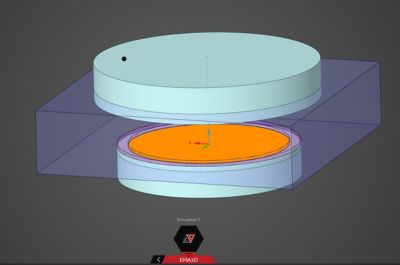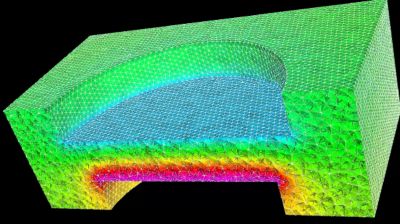-
-
Software gratuito per studenti
Ansys potenzia la nuova generazione di ingegneri
Gli studenti hanno accesso gratuito a software di simulazione di livello mondiale.
-
Connettiti subito con Ansys!
Progetta il tuo futuro
Connettiti a Ansys per scoprire come la simulazione può potenziare la tua prossima innovazione.
Paesi e regioni
Customer Center
Supporto
Partner Community
Contatta l'ufficio vendite
Per Stati Uniti e Canada
Accedi
Prove Gratuite
Prodotti & Servizi
Scopri
Chi Siamo
Back
Prodotti & Servizi
Back
Scopri
Ansys potenzia la nuova generazione di ingegneri
Gli studenti hanno accesso gratuito a software di simulazione di livello mondiale.
Back
Chi Siamo
Progetta il tuo futuro
Connettiti a Ansys per scoprire come la simulazione può potenziare la tua prossima innovazione.
Customer Center
Supporto
Partner Community
Contatta l'ufficio vendite
Per Stati Uniti e Canada
Accedi
Prove Gratuite
ANSYS BLOG
June 13, 2023
What’s in a Name? Ansys Electromagnetic Solvers Get New Identities and Capabilities in 2023
Electronics have become so ubiquitous that most of us don’t give them much thought — unless something goes wrong. We expect them to perform seamlessly, whether it’s a cell phone, a laptop, a vehicle, or a satellite that coordinates communication between all three. Electromagnetic interference (EMI), or unwanted noise in an electrical path or circuit, is the common culprit. Fortunately for manufacturers, these challenges can be addressed early on in the design process with simulation.
You may already be familiar with Ansys EMA3D Cable and Ansys EMA3D Charge, which are used to analyze EM issues and charging/discharging phenomena. Both have new names for 2023. EMA3D Cable is now Ansys EMC Plus and EMA3D Charge is now Ansys Charge Plus. More than just their names have changed, however. They’ve retained their capabilities and acquired some new ones. Let’s acquaint (or reacquaint) you with both EMC Plus and Charge Plus so you can leverage these products to solve electrically large challenges in consumer, automotive, and aerospace and defense (A&D) development.

Simulation in Ansys Charge Plus for Plasma Enhanced Chemical Vapor Deposition modeling in semiconductor manufacturing.
Ansys EMC Plus: Powering the Way We Drive
Today’s automotive designs include electronics that touch almost every aspect of a vehicle, including air bags, engine and transmission controls, braking, instrumentation, in-vehicle diagnostics, lighting, infotainment systems, and more. And that’s good news, because as automotive technology continues to accelerate, the number and complexity of these systems will continue to grow too. If improperly designed, however, many will be subject to EMI from sources both inside and outside of the vehicle that can lead to system failure.
That’s no trivial matter in a self-driving environment, for example, where all vehicle systems are subject to significant temperature fluctuations, shock and vibration, and other environmental factors yet must function without fail. So, assessing electromagnetic compatibility (EMC) — or the ability of in-vehicle electronics to consistently perform in a range of electromagnetic environments — will remain top of mind for original equipment manufacturers (OEMs) and automotive suppliers. To this end, EMC Plus can be used in the implementation of a development workflow to assess EMC and enable design changes early on that reduce risk and cost for OEMs and Tier One suppliers during vehicle testing and production.

This simulation involves the integration between Ansys Charge Plus and Ansys Chemkin-Pro. The Chemkin-Pro tool is used to simulate chemical reactions, complementing Charge Plus, which models and simulates charged plasmas.
This year, EMC Plus builds on its existing capabilities while capitalizing on a new name that places greater emphasis on platform-level electromagnetic simulation not just for cables, but for all relevant product parts. The tool and its related solvers deliver a complete, vehicle-level electromagnetic modeling solution that can be used to model and simulate a cable or bundled cables, or large-scale objects — such as an equipment enclosure or the frame of a vehicle, for example — to arrive at an electromagnetic profile.
You can also use EMC Plus to model and simulate certain kinds of electromagnetic phenomena, or interactions occurring between electrically charged objects within electromagnetic fields (fields of moving electrical charges), such as EMI. Consider a cable attached to a smartphone plugged into an automotive console, for example. The cable itself will have electromagnetic emissions that influence or negatively affect a signal trace on the printed circuit board within the smartphone.
EMC Plus has a collection of capabilities and solvers within it that enable you to design products (like a smartphone cable) with electromagnetic interference in mind, then mitigate it. In this application and others, the software can pick up any hazards, then guide design teams into making products electromagnetically compliant to government rules or standards for a variety of consumer, automotive, and aerospace electronics products and systems.
The table below provides a snapshot of EMC Plus capabilities for consumer, automotive, and A&D electronics applications based on common customer use cases.
Ansys EMC Plus Solution Highlights
| Customer Need | Ansys EMC Plus Solution |
Electromagnetic environmental effects (E3): Customers must predict the impact of the electromagnetic environment on the operational capability of defense forces, systems, equipment, and platforms — such as lightning and high-intensity radiated fields coupling to aerospace vehicles at the electronics interfaces. | Ansys EMC Plus allows for efficient simulation of full aircraft and spacecraft. The tool has been validated against full aircraft testing and can include the mechanical computer-aided design (CAD) model of the platform and all the necessary cable harness segments. |
Full-vehicle electromagnetic compatibility (EMC) with cables: Vehicle manufactures must predict effects at the vehicle level, including all the complexity of the entire platform involving hundreds of cable harness segments. | Ansys EMC Plus allows users to quickly create full-vehicle models. The product automates import of cables and represents them in a way that hundreds can be included in a single model. |
Full-device electromagnetic compatibility (EMC): Electronic devices must consider the effects of printed circuit boards (PCBs), enclosures, and cables to predict full device compatibility. | Ansys EMC Plus has a new PCB import tool to allow for board files to be imported with component and material assignments made automatically. The board may be easily fused with the enclosure in a mechanical CAD model and cable details for a full device model. |
Radio frequency (RF) de-sense: Electronic device and vehicle manufacturers must understand unintentional coupling or cross-signaling from PCBs and cables that may impact nearby RF system performance. | Ansys EMC Plus has an easy-to-use workflow to merge the electronic CAD specification of the PCB, mechanical CAD specification of the enclosure, and cables with models of the device antennas. The result is a comprehensive full-device model in the shortest amount of time. |
Ansys Charge Plus: Solving Highly Charged Challenges in Orbit
Charge Plus leverages four solvers designed to analyze charging and discharging phenomena across a range of applications — including internal and surface charging, particle transport, and arcing across interfaces — in a single workflow. When used by itself and in tandem with other Ansys products, the software offers a variety of physics to address large-scale electrical problems very easily, in many cases helping users learn and work through those problems themselves in A&D environments.
Charge Plus also leverages its solvers to model, then simulate charged plasma — a high-energy gas with its own unique properties — or a group of charged particles that can also be treated as plasma with its own energy and charge. Plasma can arise in various circumstances — such as when radiation bombards a spacecraft orbiting Earth, creating a charge on a satellite solar panel surface.

Representation of an antenna radiation pattern for an antenna incorporated in some larger body/platform like an aircraft frame or automobile frame in Ansys EMC Plus. The tool is not used to model and simulate antennas for design support — it captures a representation of the antenna fed to it by Ansys HFSS and incorporates that representation in the EM modeling and simulation of the larger structure of which it is a part.
Often these solar panels are used for collecting energy on the surface of a satellite for propulsion. As that charge accumulates, it can be a problem as it can suddenly discharge in all sorts of unpleasant ways that can negatively impact that spacecraft and its electronics. There's also a nonlinear aspect to this activity, as these discharges can’t necessarily be predicted, and they're sudden in terms of when they happen, and their amplitude. Despite the nonlinearity of these events, Charge Plus can easily capture, then properly model and simulate them.
Ansys Charge Plus Solution Highlights
| Customer Need | Ansys Charge Plus Solution |
| Space environment and radiation effects: Spacecraft manufacturers and their suppliers need to understand the impact of space environments and radiation on spacecraft materials and components. | Ansys Charge Plus includes multiple solvers to predict spacecraft surface charging, internal charging, and radiation effects. It can handle 3D geometry and set up simulations in an easy-to-use interface. |
| Electrostatic Discharge (ESD): Electronics designers need to model the effects of non-contact, air ESD (static electricity) on their products. | Ansys Charge Plus has an air ionization module that allows for the nonlinear effects of ESDs and discharges to be modeled from first principles. It enables the import of complex electronic CAD and mechanical CAD files to address all parts of an electronic device easily. |
| Arc extinction: Designers of switches and circuit breakers must design products so that negative effects of the arcs, caused when a gas electrically breaks down resulting in prolonged electrical discharge, are minimized at the lowest cost. | Ansys Charge Plus has co-simulation functionality with Ansys Fluent using Ansys System Coupling to allow for direct coupling for a true multiphysics solution. |
| Semiconductor plasma modeling: Semiconductor chip manufacturers use plasma processes to aid in chemical vapor deposition (CVD, i.e. coating) or etching. They require the ability to model the physical processes in the plasma and on the surface of chips. | Ansys Charge Plus has compressible fluid dynamics coupled to the existing electrodynamic and particle-in-cell (PIC) solvers in Charge Plus to create an advanced simulation tool for plasma and gas flow modeling in applications such as plasma-enhanced CVD and etching. Ionized gas and surface reactions are now captured in Charge Plus by coupling Chemkin-Pro to the PIC and the CFD solvers, providing a streamlined approach to simulating the complex chemical reactions involved in plasma-assisted processes. |
Interested in hearing more? Check out how Ansys EMC Plus and Ansys Charge Plus are enabling manufacturers to solve electrically large challenges in EMI/EMC.